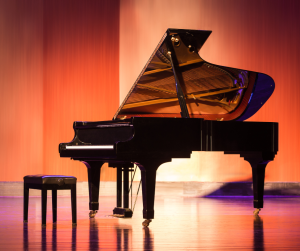 Music plays an integral role in religious organizations. It is often used to evoke feelings and create a sense of unity among listeners. Organs are popular in religious organizations, but other common instruments include pianos, guitars, drums, brass, woodwinds and strings. Musical instruments also present unique challenges from a coverage perspective. Review the following guidance for the primary risks and considerations involving musical instruments in religious organizations.
Music plays an integral role in religious organizations. It is often used to evoke feelings and create a sense of unity among listeners. Organs are popular in religious organizations, but other common instruments include pianos, guitars, drums, brass, woodwinds and strings. Musical instruments also present unique challenges from a coverage perspective. Review the following guidance for the primary risks and considerations involving musical instruments in religious organizations.
Risks
Protecting and caring for musical instruments comes with a unique set of risks. Musical instruments can be valuable, making them a target for theft. This risk will not be the same across all instruments. Pianos and organs, for example, are too large and heavy to be stolen easily. Some instruments must be precisely fine-tuned to create the proper sound. Damage can affect the sound quality and function of these instruments, irreparably decreasing their value and usability.
Insurance Considerations
In the event that an instrument is stolen or damaged, the right insurance can insulate your organization against costly losses. Here are some insurance options to consider:
- Property insurance—Organs built into the structure of the building will likely be covered under a property insurance policy. Proper valuation of these organs is critical, as they can be expensive to repair. Older pieces often require specialists for care, maintenance and repair. Modern digital organs are unlikely to be covered under a property policy.
- Inland marine insurance—For broader coverage, inland marine insurance may be a good choice. Unlike many standard property insurance policies, inland marine may cover damage from earthquakes and floods. These policies also typically cover damages that occur during transportation or while instruments are off the premises. Additionally, the value of an instrument is agreed to ahead of time, preventing disputes later on. These policies contain blanket coverage for all instruments under a single insurance limit. This is beneficial for smaller value instruments. Scheduled insurance can also be written for individual instruments. This is typically better for instruments with a value over $1,000.
Additional Measures
In addition to proper insurance, consider the following measures to protect musical instruments and organs from harm:
- Keep instruments secure. Musical instruments should be locked in a secure place when not in use to reduce the risk of theft.
- Mark instruments. Etch serial or identification numbers onto musical instruments. If stolen, these numbers can help law enforcement find and return the instruments.
- Put organs on a maintenance schedule. Organs should be regularly tuned and cleaned by a specialized professional. This is essential to keep organs in tune and in working order.
These measures can reduce the likelihood of claims.
Conclusion
Religious organizations frequently rely on organs and other musical instruments during service. The value of these items makes repairs costly and increases the risk of theft. With the proper insurance, your organization can ensure all instruments are covered in case of damage or other loss. For more coverage guidance, contact us today.



One reply on “Coverage Insights – Organs and Musical Instruments”
Anchor Insurance’s blog offers valuable insights into various insurance topics, including health, property, and benefits. Recent posts cover subjects like health insurance terminology, the importance of sprinkler systems in religious organizations, and the benefits of voluntary life insurance. These articles aim to educate readers on essential insurance matters.